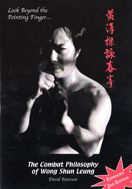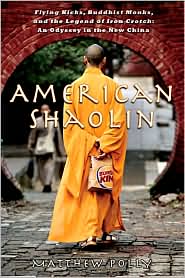Book and Media Reviews
Given its popularity, Wing Chun Kung Fu has become the subject of countless books, videos, and movies. Note that these are personal opinions, which may be different from yours or anyone else.
Books
Wing Chun Kung Fu
James Yimm Lee, edited by Bruce Lee, 1989

Complete Wing Chun: the Definitive Guide to Wing Chun's History and Traditions
Rene Ritchie, et al, 1998
The authors of the book still lament the use of "Complete" in the title, especially since their original title apparently
tried to avoid any broad, all-encompassing language to indicate completeness. What this book does offer is a very
interesting look into the many families of Wing Chun out there, how they train, and their origins; in the end, it draws
convincing conclusions as to the evolution of the art. Pictures and illustrations serve their intended purpose of giving
an idea of "what is out there."
Yuan Kay San Wing Chun
Rene Ritchie, 1999

Wing Chun Kung Fu, 3 volumes
Joseph W. Smith, 1992

100th Anniversary of Yip Man
Edited by the Ving Tsun Athletic Association
Containing varying articles from several different prominent Wing Chun practitioners, this book is actually a hodgepodge
of essays ostensibly arranged under certain themes. A reader can find a lot of great gems among the articles, if he can
get past the poor English editing (and frequent mistranslations from Chinese). Also, with several accounts and ideas that
contradict one another, you can see that how, even within a single lineage, people's interpretation of Wing Chun can be
different.
Wing Chun Martial Arts
Yip Chun with Danny Conner
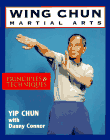
Wing Tsun Kuen
Leung Ting
The Bible of Leung Ting's own Wing Tsun organization, this book offers a great overall view of Wing Chun, as well as some
wonderful self-promotion as well. Leung Ting is something of a controversial figure, with some of Yip Man's students claiming
that he never studied with the Grandmaster. I don't know for sure, but no matter what, the book is well-done. Given that
Leung Ting's has the largest martial arts organization in the world, he must be doing something right. Pictures are well done,
and demonstration of the first two forms and their applications are quite extensive. This book also has the best presentation
of chi sao that I have seen in a book. Great for a beginner.
Dynamic Wing Tsun
Leung Ting
This book provides a systematic introduction to fighting drills. Given the wide range of teaching approaches, this book may
or may not be helpful for your own training regimen. If your style leaves all weight on the back foot, then you may find it very
useful. Otherwise, it will probably be difficult to work it into the way you practice. But then, maybe it might convince you to
change your footwork.
108 Wing Tsun Wooden Dummy Techniques
Forward by Leung Ting and Yip Chun, demonstrated by Yip Man
Great reference book for those who know or are learning the dummy form. Yip Man's son Yip Chun presents a story of Yip
Man which differs from an earlier story he penned. Also, because some of the original pictures were lost, Yip Chun fills in
the gaps; you can really tell from the pictures that there is a significant skill difference between father and son! The applications
of the dummy are very direct, taken move for move, an approach which my own Sifu would disagree with.
Introduction to Wing Chun
By Kawamura Yousou
Written by Japan's authority on Wing Chun, this great book sums up the art for the beginner. Lots of drills that can help
someone develop, and insights into the different branches of Wing Chun. Shows the first from in its entirety, as well as
applications. Unfortunately, the book is in Japanese.
On Single Combat
By Keith Kernspecht
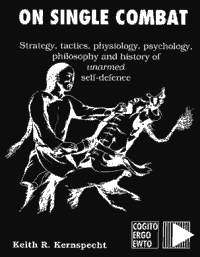
Look Beyond the Pointing Finger
– The Combat Philosophy of Wong Shun Leung
By David Peterson
Simple, pragmatic advice on how to use WC for combat. Also, insight into the thinking and approaches of perhaps WC's most famous fighter.
Videos
Martial Arts of the Police
By Sifu Lo Man Kam
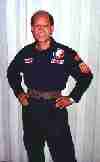
The Wing Chun Fighter II
By Steven Lee Swift
This tape shows Steven Lee Swift using various combat techniques, chi sao possibilities, and attack chains. A great tape, if you can get past Sifu Swift's exaggerated head movements and personal sound effects.
Movies
Wing Chun
Starring Michelle Yeoh and Donny Yen

Prodigal Son
Starring Yuen Biao, with Sammo Hung

Warriors II
With Sammo Hung
This story picks up where Prodigal Son leaves off. Leung Chan has already made a name for himself, becoming known as
the "Kung Fu King of Wing Chun." Mirroring his own story, he takes in Money-changer Chan as his student. Leung is
murdered in a nasty plot to take over the city of Foshan, and his students avenge him. Great training sequences, but too
many high kicks for me.
Other Interesting Books
Meditations on Violence
By Sgt. Rory Miller
This book a straight dose of reality and a very sobering read. The section on the 4 basic truths of violent assault – just a few pages long – is worth the price of the book.
Championship Streetfighting – Boxing as a Martial Art
By Ned Beaumont
It makes a great case that western boxing can be used very effectively as a martial art or self-defense system, and confining it to "sport" is a misconception. Also, it emphasizes the importance of being able to generate power in a confrontation.
American Shaolin
By Ned Beaumont
An interesting insight into China before it opened more to the West, and also a perspective on how the Shaolin "brand" has been misappropriated in the pursuit of money and cultural bragging rights. Also, some kung fu.

